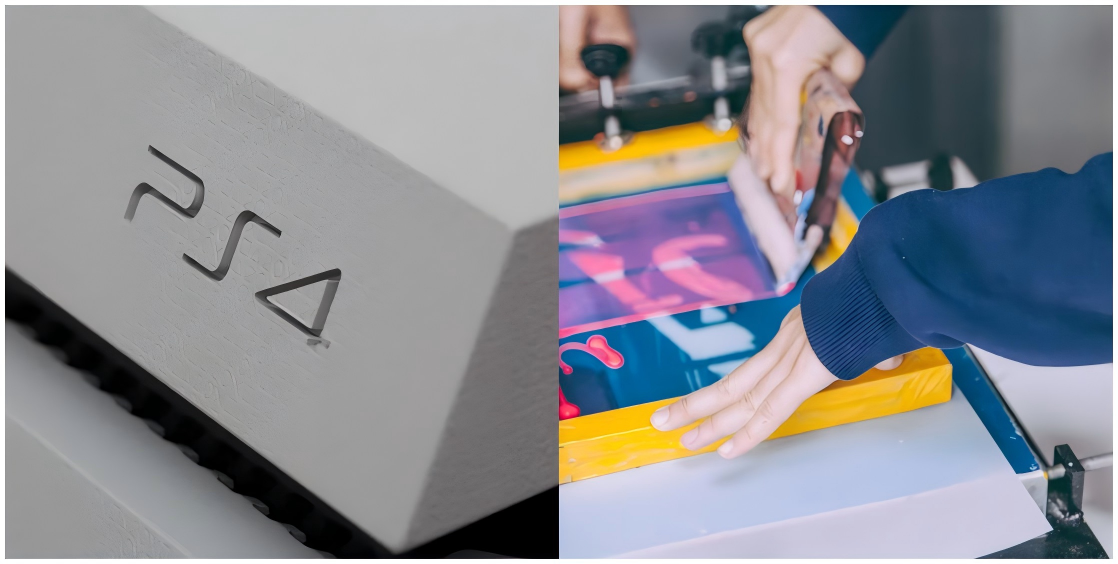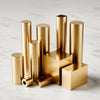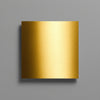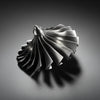Laser Marking vs Silkscreen: How to Choose The Best Process for Your Parts

1.The Principles of Laser and Silkscreen
This two process Laser Marking vs Silkscreen both all are very useful in ID(Industrial Design). In many case, they can be change for each other. But their principles are completely different. So, we should know how to distinguish them to avoid some potential hazards in our product.
-
Laser Marking(Etching)
Have you ever tried to use a magnifying glass to focus sunlight to burn something? Laser marking is essentially an optical surface treatment. It shoot high-energy pulse beams through the laser head. When the beams touch the surface of the product, a huge amount of heat be converted immediately. The material surface occur some physical effects such as melting, foaming, and vaporization. In our eyes, the material surface have changed the color, and finally the image is formed.
-
Silkscreen (Surface Coating)

As shown in the picture, Silkscreen is under the action of the squeegee, the ink leaks from the image of the screen to the printing substrate. The non-image part is blocked by the photoemulsion, the ink cannot leak onto the substrate, thus completing the printing image.
2.Performance of The Two Processes on Different Materials
| Material | Laser Marking Performance | Silkscreen Performance |
|---|---|---|
| Stainless Steel |
Durable Color printing possible |
Adhesion issues Requires primers |
| Aluminum | Deep engraving over 2mm | Good with epoxy inks |
| Plastics |
Best on ABS & PC Toxic gas on PVC |
Excellent color vibrancy |
| Glass/Ceramics |
3D engraving possible No chipping |
Adhesion issues |
| Fabrics | Precision cutting/etching (lace, denim) | Limited detail (>0.5mm line width) |
3.Cost Analysis
| Factor | Laser Marking | Silkscreen Printing |
|---|---|---|
| Cost per Part | $0.15–$0.60 (Including device depreciation) |
Starting from $20-$30(stencil cost) $0.02–$0.20 (ink-dependent) |
| Lead Time | Minutes (digital file upload) | Hours–days (stencil production) |
| Labor | Fully automated | Manual alignment/press operation |
| Consumables | None (electricity only) | Inks, emulsions, screen replacements |
-
<500 units: Laser Marking is cheaper.
- >1,000 units: The prices of the two will be close, which process to use will depend on other factors
4.Performance Metrics: Quality & Durability
Laser Marking
- Permanence :Resists solvents, UV, abrasion (critical for aerospace/medical)
- Repeatability :Usually less than 0.01mm
Silkscreen
- Size :Larger printing possible
- Color Range : Available in almost any color
Durability Test Results:
- Laser marks with stand 1,000+ hours salt spray (vs. 100–200 hours for silkscreen) .
- Silkscreen inks fade after 2 years of UV exposure; lasers last decades.
5.When to Choose Which
Laser Marking
- Traceability is critical:T Aerospace (ATA SPEC 200), medical (UDI), or automotive parts requiring scannable Data Matrix code.
-
Permanence under harsh conditions: Parts exposed to chemicals, weather, or wear.
Silkscreen
-
Artistic Value: Consumer products (logos, decorative items and soft objects).
-
High-volume/low-complexity: >10,000 units with simple graphics. (No complex slopes or curves)
Conclusion: Matching Technology to Purpose
-
Prioritize durability and automation? Laser marking’s digital precision and zero consumables justify its upfront cost for industrial applications.
-
Need vibrant colors and cost efficiency at scale? Silkscreen remains unbeatable for consumer goods.
Tips: The ink used for silkscreen may deteriorate over time, and there may be slight differences in the proportions each deployment ratio. There may be certain differences in color and wear resistance between different batches.
-
Posted in
Laser Marking, Post processing, R&D, rapid prototyping, Silkscreen, surface process





